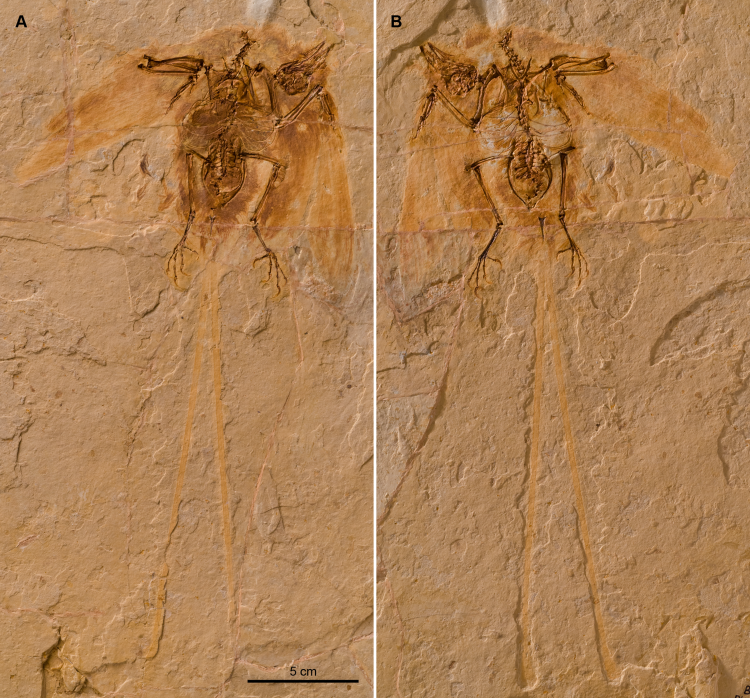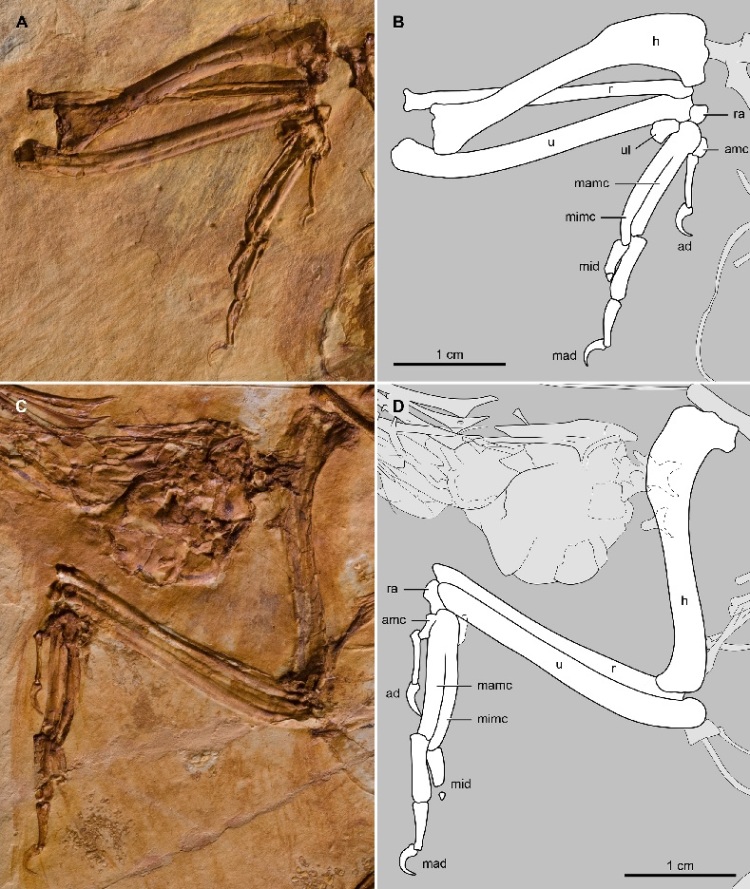
Holotype of Junornis houi. (From Liu et. al; 2017)
Birds originated from a theropod lineage more than 150 million years ago. By the Early Cretaceous, they diversified, evolving into a number of groups of varying anatomy and ecology. The Enantiornithes are the most successful clade of Mesozoic birds. In the last decades, exceptionally well preserved avian fossils han been recovered from China. The most recent, Junornis houi, from the Yixian Formation of eastern Inner Mongolia, represents a new addition to the enantiornithine diversity of the Jehol Biota.
The holotype (BMNHC-PH 919; Beijing Museum of Natural History), from the Early Cretaceous (~ 126±4 mya) of Yixian Formation, is a nearly complete and articulated skeleton contained in two slabs, and surrounded by feather impressions defining the surface of its wings and body outline. The name Jun is derived from a Chinese character meaning beautiful; and ornis is Greek for bird. The species name, houi honors Dr. Hou Lianhai.

Photograph and interpretative drawing of the forelimb of Junornis houi (From Liu et. al; 2017)
Junornis exhibits the following combination of characters: rounded craniolateral corner of sternum; distinct trough excavating ventral surface of mediocranial portion of sternum; triangular process at base of sternal lateral trabecula; sternal lateral trabecula broad and laterally deflected; sternal intermediate trabecula nearly level with mid-shaft of lateral trabecula; sternal xiphoid process level with lateral trabeculae; costal processes of last two penultimate synsacral vertebrae three times wider than same process of last synsacral vertebra; and very broad pelvis. Non-pennaceous, contour feathers cover much of the skeleton except the wings and feet.
Based on the well-preserved skeleton and exquisite plumage of Junornis, it was possible make some estimation of its flight capacity. The body and wings of this bird were similar to those of modern passeriforms such as Alauda arvensis and to other small-sized birds that fly using intermittent bounds. The low aspect ratio (AR = 5.5) wings of BMNHC-PH 919 suggest that it may have been adapted to rapid take-offs, given that modern birds with proportionally short, broad wings tend to maximize thrust during slow flight. The low wing loading (WL = 0.18 g/cm2) of this fossil indicates that this bird would have been able to generate a large magnitude of lift at low speeds because for a given speed and angle of attack, birds with greater wing area (and therefore lower WL) generate more lift than those with small wing areas. This value also suggest that this bird would have been highly maneuverable and able to perform tight turns.
References:
Liu D, Chiappe LM, Serrano F, Habib M, Zhang Y, Meng Q (2017) Flight aerodynamics in enantiornithines: Information from a new Chinese Early Cretaceous bird. PLoS ONE12(10): e0184637. https://doi.org/10.1371/journal.pone.0184637
So many thanks for this blog and nice topic. So Dino are still living with us. They are represented by birds. So these belong in fact to the first wave of life that appeared before the 66 mya mass extinction
/ I know mammalia -and us- are descned from a reptile also,
But birds are more close to that wave of life.
Pingback: Fossil Friday Roundup: October 20, 2017 | PLOS Paleo Community
Pingback: Dinosaur age bird could already fly well | Dear Kitty. Some blog